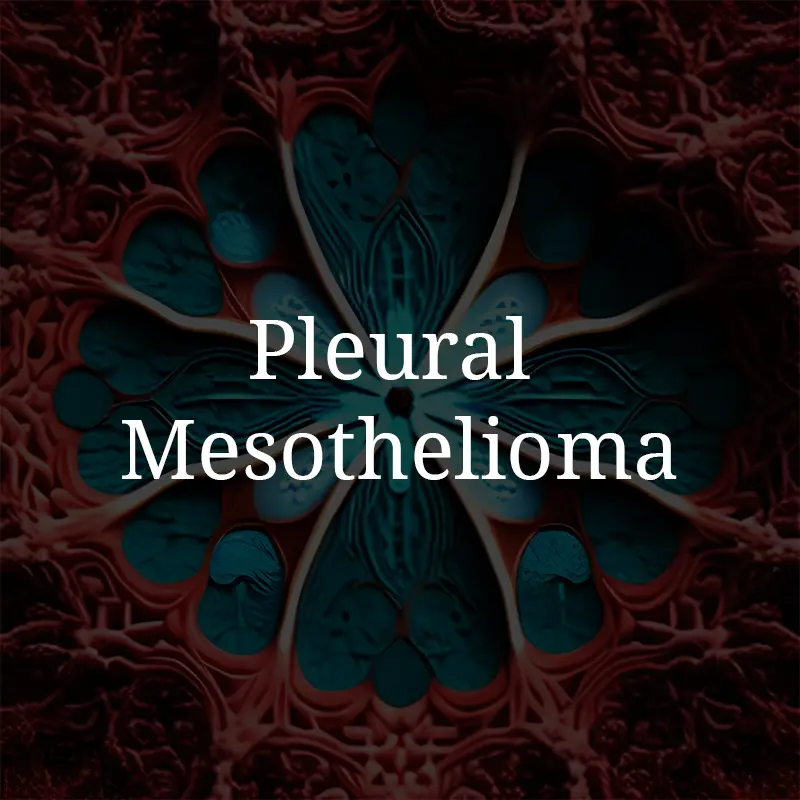Science
What is Petroleum Oil? Its Origin, formation, Oil Shales and Reserves
Fascinating story of the world’s most valuable natural resource – Petroleum – one that rules the modern world, and literally, makes it go!

Petroleum Oil rules our world. The world’s economy virtually revolves around it. Oil has now become one of our planet’s most valuable commodities, essential to our daily life.
The word ‘petroleum’ is coined from two Latin words – ‘petra’ and ‘oleum’. Petra means rock, and oleum means oil, and these words, in brief, tell their story very well. Petroleum is formed from the remains of ancient living things. Man has been using oil for thousands of years. But we began to consume oil in vast quantities only in recent times. With such a huge consumption, it is clear that very large quantities of oil are being dugout, and the world’s oil supplies are gradually running out. A real, viable alternative for oil is yet to be discovered.
What is petroleum?
Petroleum is a naturally occurring liquid that can be refined to make petrol, diesel fuel, jet fuel, home heating oil, lubricating oil, wax, asphalt, and many other valuable products. It is usually a dark and oily liquid, but it can also be in a solid or gaseous form. When petroleum comes straight out of the ground as a liquid, it is called crude oil, if it is dark and sticky. If it is clear and volatile, it is called condensate. Petroleum that is solid is called asphalt, while in the semi-solid state it is known as bitumen. In the gaseous state, petroleum is natural gas. Petroleum is a complex mixture of chemicals and is an entirely natural product made out of the decomposed remains of living things.
Origin of word Petroleum
Petroleum is one of the world’s most important substances, for it is a rich source of valuable chemicals. The word ‘petroleum’ comes from the Latin ‘petra’ which means ‘rock’ and ‘oleum’ which means ‘oil’. So, the word actually means ‘rock oil’.The rocks in which petroleum is found lie deep underground.
The ‘crude’, as people in the oil industry call petroleum, is reached by drilling beneath the Earth’s surface. Petroleum is called by many names, including ‘black gold’ and ‘liquid sunlight.’ It is called ‘black gold’ because crude oil is usually black in color, and at the same time, it is valuable like gold.
Sometimes it is called ‘liquid sunshine’, because the sun is the Earth’s main source of energy, and petroleum is made from decomposed plants that stored the sun’s energy millions of years ago.
How is petroleum oil formed?
Petroleum is formed by hydrocarbons. A hydrocarbon is a compound made up of carbon and hydrogen, with the addition of certain other substances, primarily, sulfur. Petroleum is actually the remains of animals and plants that lived millions of years ago, even before the dinosaurs, in a marine environment.
In those times, the Earth was very different from what it is now, and most of the areas that are now land were then underwater. Marine plants and animals stored the sun’s energy in their bodies. When they died, their remains sank to the bottom of the oceans and seas and were covered by tiny particles of rock and soil.

As the remains of these animals and plants settled under layers of sand and mud, chemicals and bacteria went to work. Over long periods of time, tiny oil droplets were formed. In time, tiny droplets of oil seeped into the layers of porous rocks and were held in place in the same way that a sponge holds water.
Generally, oil droplets became concentrated in certain places where nonporous rock blocked their movement, and it is from these areas that we get crude oil, which is petroleum in its natural, liquid form.
Where is crude oil found?
We know that the Earth’s crust has shifted a lot over millions of years. These great movements of the Earth’s crust pushed the bed of the ocean down in some places and raised it in others. Where the ocean bed was raised, mountains were formed. In time, these mountains were worn down.
Continents also changed their shape, and the oil-bearing rocks that were once at the bottom of the ocean were pushed this way and that. They were shifted to different places further inland, away from the shore, and that is why we find oil in deserts today.
Petroleum Reserves and Oil Shales
Oil is found in the shallow gently sloping ocean bed that lies between the shoreline and the ocean depths. This slope is known as the continental shelf, and most continents are bordered by such a shelf. The deposits found here are known as offshore deposits.

Offshore deposits are found in Bombay High, the Gulf of Mexico, the Persian Gulf, and the North Sea, and off the west coast of the United States. Oil is also found under lakes, such as Lake Maracaibo in Venezuela, as well as in the deserts of the Middle East. Venezuela, Saudi Arabia, Canada, Iran, Iraq, Kuwait, UAE, and Russia are the countries having the largest oil reserves.
Oil shale is a compact, fine-grained sedimentary rock that contains various amounts of organic matter. Oil in the shale is contained within a waxy, bituminous substance called kerogen. In order to release the oil from the kerogen, the shale is first crushed. Then, it is heated in a furnace into which air is not admitted.
The principal products are oil, gases, and water solutions of organic acids and other substances. The United States holds more than fifty percent of the world’s known oil shale resource. Oil shales are also found in Scotland, Australia, and Brazil.
Science
What is Pleural Mesothelioma and How is it Treated?
Pleural mesothelioma is a rare form of cancer that affects the pleura, which is the thin membrane that lines the lungs and chest wall. This type of cancer is primarily caused by exposure to asbestos.

Pleural mesothelioma is a rare form of cancer that affects the pleura, which is the thin membrane that lines the lungs and chest wall. This type of cancer is primarily caused by exposure to asbestos, a naturally occurring mineral that was once widely used in various industries due to its heat-resistant properties. Unfortunately, it can take decades for symptoms of pleural mesothelioma to appear after exposure to asbestos, which can make diagnosis and treatment challenging.
Symptoms and Diagnosis
The symptoms of pleural mesothelioma can vary from person to person, but some of the most common symptoms include chest pain, shortness of breath, coughing, fatigue, and weight loss. These symptoms can be caused by other conditions as well, which is why it’s important to get a proper diagnosis from a medical professional.
Diagnosing pleural mesothelioma typically involves a combination of imaging tests, such as X-rays, CT scans, and MRIs, as well as a biopsy, which involves taking a small tissue sample from the affected area for examination under a microscope. If you have a history of asbestos exposure and are experiencing symptoms, it’s important to talk to your doctor as soon as possible.
Treatment Options
The treatment options for pleural mesothelioma depend on the stage of the cancer and other factors, such as the patient’s age and overall health. In general, the earlier the cancer is diagnosed, the more treatment options are available. Some of the most common treatment options for pleural mesothelioma include surgery, chemotherapy, and radiation therapy.
Surgery may be used to remove as much of the cancerous tissue as possible, and can include procedures such as pleurectomy and decortication (P/D), which involves removing the pleura and any visible tumors, or extrapleural pneumonectomy (EPP), which involves removing the entire lung and surrounding tissue. Chemotherapy and radiation therapy may also be used to shrink tumors or slow the spread of cancer.
In some cases, clinical trials may be available for patients with pleural mesothelioma. These trials can involve testing new treatments or combinations of treatments to see if they are effective in treating the cancer.
Prognosis and Survival Rates
The prognosis for pleural mesothelioma can vary depending on a number of factors, including the stage of the cancer, the patient’s age and overall health, and the treatment options chosen. Unfortunately, the survival rates for pleural mesothelioma are generally low, with most patients surviving for less than a year after diagnosis. However, some patients may live for several years with the help of aggressive treatment and supportive care.
Prevention
The best way to prevent pleural mesothelioma is to avoid exposure to asbestos. This means that individuals who work in industries where asbestos is still used, such as construction or shipbuilding, should take precautions to limit their exposure, such as wearing protective gear and following safety protocols. If you think you may have been exposed to asbestos in the past, it’s important to talk to your doctor about your risk of developing pleural mesothelioma and to undergo regular screenings to catch any potential cancer early.
In conclusion, pleural mesothelioma is a rare but serious form of cancer that is primarily caused by exposure to asbestos. While the prognosis for this type of cancer is generally poor, there are treatment options available that can help improve quality of life and prolong survival. If you are at risk for pleural mesothelioma or are experiencing symptoms, it’s important to talk to your doctor as soon as possible to get a proper diagnosis and explore your treatment options.
History
The History of Nursing: From Ancient Times to Modern Healthcare
Nursing is a profession that has been an integral part of human society for thousands of years. It is the practice of caring for the sick, injured, or vulnerable and promoting health and well-being.

Nursing is a profession that has been an integral part of human society for thousands of years. It is the practice of caring for the sick, injured, or vulnerable and promoting health and well-being. Nursing has evolved over time to become a highly respected profession that requires specialized knowledge and skills. In this article, we will explore the history of nursing and its etymology.
Etymology of Nursing
The word “nurse” comes from the Latin word “nutrire,” which means to nourish. The term “nurse” has been used to describe women who provide care for others since ancient times. In ancient Rome, nurses were often slaves or women from lower social classes who were tasked with caring for sick and injured individuals. The word “nurse” was also used in the Middle Ages to refer to wet nurses, women who breastfed infants that were not their own.
The modern meaning of the word “nurse” began to take shape in the 19th century when nursing began to be recognized as a profession. The first nursing school was established in 1860 by Florence Nightingale, who is considered the founder of modern nursing. Nightingale’s work during the Crimean War revolutionized nursing and set the standard for nursing education and practice.
History of Nursing
Nursing has a long and varied history that dates back to ancient times. In many early societies, nursing was seen as a woman’s role and was often performed by midwives, priestesses, or other women in the community.
In ancient Egypt, nursing was a highly respected profession that was often performed by men. The goddess Isis was considered the patroness of nursing, and many nurses wore her symbol, the horned viper, on their clothing.
In ancient Greece, nursing was also considered a respected profession. Hippocrates, the father of medicine, recognized the importance of nursing and wrote about the role of nurses in caring for the sick.
During the Middle Ages, nursing was primarily performed by religious orders, such as nuns and monks. These orders established hospitals and provided care for the sick and injured.
The 19th century saw a significant shift in the way nursing was practiced and perceived. Florence Nightingale, a British nurse, revolutionized nursing by emphasizing the importance of cleanliness, hygiene, and patient care. She established the first nursing school and wrote extensively on the subject of nursing.
During World War I, nursing played a crucial role in caring for wounded soldiers. Nurses worked in field hospitals and on the front lines, often in dangerous and difficult conditions.
In the 20th century, nursing continued to evolve as medical technology advanced. Nurses began to specialize in different areas, such as pediatrics, oncology, and critical care. Today, nursing is a highly respected profession that requires specialized knowledge and skills.
Conclusion
Nursing is a profession that has evolved over time to become an integral part of modern healthcare. From its roots in ancient societies to the establishment of the first nursing school by Florence Nightingale, nursing has a rich and varied history. Today, nurses are essential members of healthcare teams and play a vital role in caring for the sick and injured. The etymology of the word “nurse” reflects the fundamental role of nursing in nourishing and caring for others.
Biology
20 Mindboggling Fun Facts about Heart for Kids

Fun Facts about Heart
The heart is the hollow muscular organ located behind the sternum and between the lungs; its rhythmic contractions move the blood through the body. In all humans, other mammals, and birds, the heart has 4 chambers while in fishes it is divided into two chambers.
Did you know that heart-related diseases or CVD account for 32% of all human deaths around the globe as of 2015? Isn’t that scary? Here is a list of 20 Amazing Fun Facts about Heart, check it out!

#1-#10
#1 Xenographic transplants involve taking an organ from an animal and using it in a human being – a chimpanzee heart was transplanted into a man in Mississippi, the USA in 1964, but the patient died two hours later.
#2 Your right lung is larger than your left – this is because the left lung needs to make room for your heart. Did you know Your heart beats about 35 million times a year?
#3 The pressure created by your heart can squirt blood almost ten meters.
#4 The blue whale has the slowest heartbeat of any animal – it only beats four to eight times a minute.
#5 The heart is the only muscle that doesn’t take its signal from the nervous system – it has its own stimulator in the right atrium.
#6 The larvae of the pork tapeworm, hatched from eggs eaten in infected pork, can travel around the body and live in the brain, eyes, heart, or muscles.
#7 A giraffe has special valves in its arteries so that its blood can reach up to its head. Without them, it would need a heart as big as its whole body!
#8 About 70 milliliters (around 2.5 fluid ounces) of blood are spurted out of your heart with each beat.
#9 Your heart pumps around 182 million liters (48 million gallons) of blood in your lifetime – with an endless supply of blood, it could fill a swimming pool in less than a month!
#10 Nuttall’s poorwill is an American bird that hibernates in the winter, hiding in a crack in a rock. During this time, it uses only a thirtieth of the energy it uses in the summer and its heartbeat becomes so faint that it can’t be felt.
#11-#20
#11 When you sneeze, all your body functions stop – even your heart stops beating. A very long sneezing fit can cause a heart attack.
#12 Newts can re-grow body parts that are lost or damaged, including legs, eyes, and even hearts. Scientists who have studied how they do this think they might be able to persuade human bodies to do the same.

Newt
#13 In Vietnam, cobra hearts are a common snack. They can be eaten raw, even still beating, with a small glass of cobra blood or dropped into a glass of rice wine. The kidney is often included as an extra titbit.
#14 The Scottish dish haggis is made by cutting up the heart, lungs, liver, and small intestine of a calf or sheep and cooking it with suet, oatmeal, onions, and herbs in the animal’s stomach.
#15 During heart surgery in 1970, a patient with hemophilia (an inherited condition which stops the blood clotting) needed 1,080 liters of blood – nearly 15 baths full – as he kept bleeding.
#16 The poet Shelley drowned off the coast of Italy in 1822. His body was washed up, half-eaten by fish, and cremated on the beach by his friends. One of them cut his heart from the burnt body and gave it to Shelley’s wife who kept it all her life.
#17 The glass frog is lime green but has a completely transparent stomach. It’s possible to see the blood vessels, the heart, and even check whether it’s eaten recently or might like a snack.

Glass Frog
#18 People who killed themselves used to be buried at a crossroads with a stake through their heart. It was thought that they couldn’t go to heaven, and the cross-roads would confuse their ghost so that it couldn’t find the way home to haunt anyone.
#19 A robotic caterpillar controlled by a joystick can be inserted through a small hole in the chest, and crawl over a person’s heart to inject drugs or install implants to heal any damage. Is it nanotechnology?
#20 Apart from the heart, an Egyptian mummy doesn’t have any internal organs left inside the body. The others were removed and put into separate canopic jars that were buried with it. You can continue reading 10 More interesting facts about the Human Digestive System.

 History4 years ago
History4 years ago27 Famous Renaissance Writers and Their Works

 History4 years ago
History4 years ago20 Greatest English Writers of Modern Literature

 History4 years ago
History4 years ago13 Greatest Ancient Greek Writers and Their Works

 History4 years ago
History4 years ago6 Greatest Ancient Indian Writers and Their Works

 Biography4 years ago
Biography4 years agoNon-violence: 8 Famous Personalities influenced by Gandhian Philosophy

 History4 years ago
History4 years ago10 Greatest American Writers of Modern Literature Era

 Biology4 years ago
Biology4 years agoAnatomy of Amphibians | Skeleton, Respiratory System, Food Facts

 Biology4 years ago
Biology4 years agoSenses of Amphibians – Functions of Eyes, Ears and Skin





































